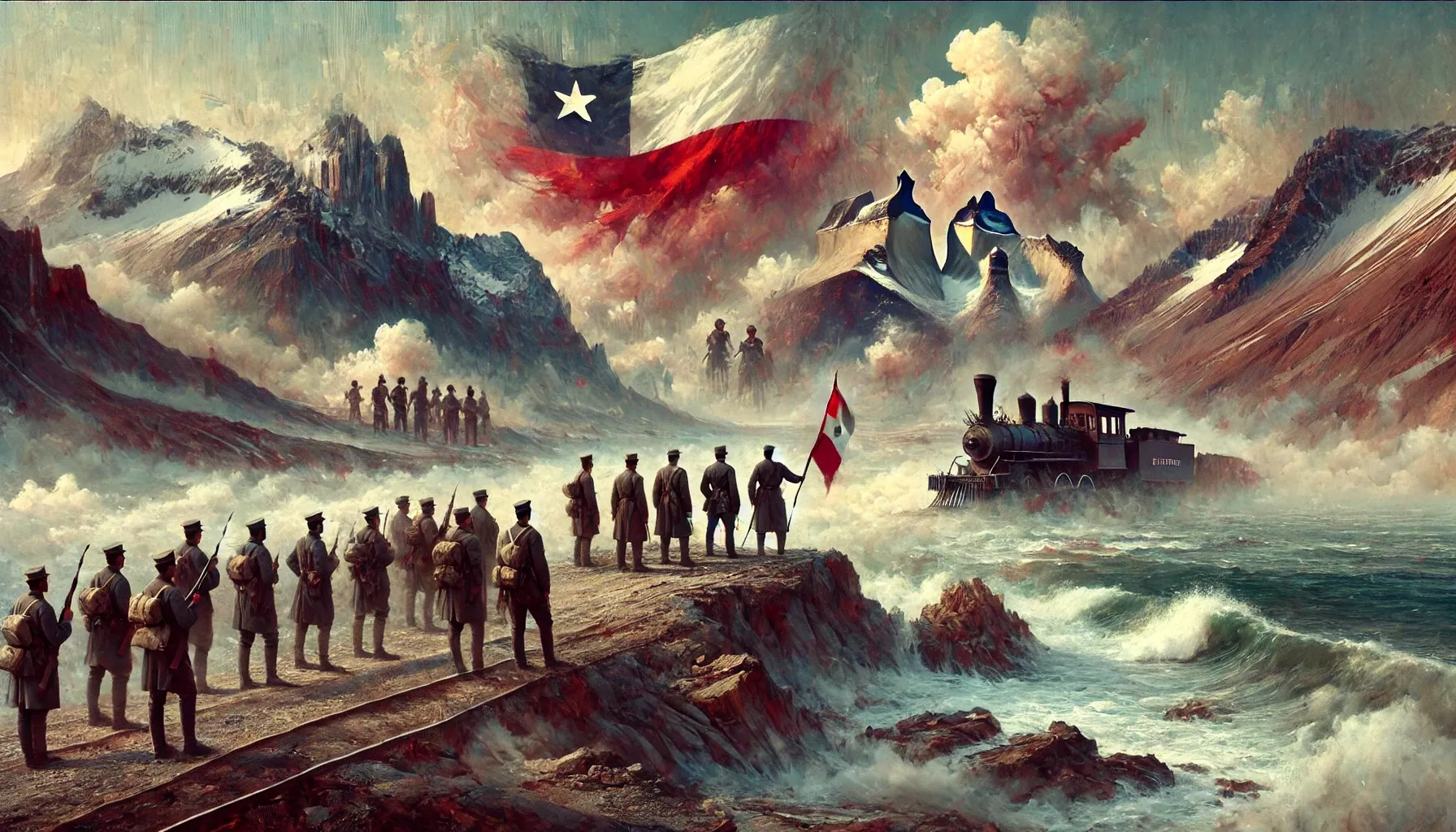UPSC
On This Day Today
1879, Chile Declared war on Bolivia and Peru, Officially Starting the War of the Pacific
Last Updated
5th April, 2025
Date Published
4th April, 2025
Share This Post With Someone

The War of the Pacific: Shaping South America’s Geopolitical Landscape
The War of the Pacific (1879-1884) was a defining conflict in South American history, involving Chile, Peru, and Bolivia over resource-rich territories. Its outcomes reshaped national boundaries, economic trajectories, and regional power dynamics, offering valuable insights into geopolitics, resource conflicts, and their long-term implications. This summary distills key details from the conflict, relevant for aspirants preparing for competitive examinations focusing on international history and geopolitics.
Key Points:
Background and Causes:
- Conflict Period: The War of the Pacific spanned from 1879 to 1884, pitting Chile against the allied forces of Peru and Bolivia.
- Resource at Stake: Control over nitrate and mineral deposits in the Atacama Desert, vital for fertilizers and explosives, drove the conflict.
- Economic Interests: Nitrate mining, initially dominant in Peru’s Tarapacá region, expanded to Bolivia’s Atacama in the 1860s, led by Chilean and British companies.
- Trade Routes: The war was also about securing Pacific trade routes and defining national borders.
- Preceding Conflicts: Earlier regional disputes, like the War of the Confederation (1836-1839) and the Spanish-South American War (1864-1866), set the stage for this rivalry.
Key Events:
- Outbreak: Began in 1879 over disputes in the nitrate-rich Atacama Desert.
- Major Battles:
- Battles of San Juan and Chorrillos (January 13, 1881) and Miraflores (January 15, 1881) were brutal, leading to Chilean occupation of Lima.
- Peruvian forces lost nearly a third of their troops in these engagements.
- Lima Occupation: Chilean forces invaded and administered Lima for over two years, with significant looting reported.
- War’s End: Concluded in stages, with Chile declaring victory after Lima’s fall, formalized by treaties in 1883-1884.
Outcomes and Territorial Changes:
- Chilean Victory: Chile emerged as the clear winner, significantly expanding its territory.
- Bolivia’s Loss: Bolivia lost its nitrate-rich coastal region, becoming landlocked.
- Peru’s Losses: Peru ceded valuable land, including Tarapacá, and endured Chilean occupation of its capital.
- Border Redefinition: Previously diffuse borderlands were redrawn, favoring Chile’s expansion.
Economic and Demographic Impacts:
- Economic Shifts: Nitrate became a coveted global commodity, boosting Chile’s economy while crippling Bolivia and Peru.
- Demographic Changes: Mining activities spurred population shifts, altering regional demographics.
- Indigenous Impact: Post-war, Chile intensified campaigns against the Mapuche, redirecting military focus to indigenous territories.
International Attention:
- Global Coverage: The war attracted international media, with newspapers like the London Illustrated News featuring wood engravings of photographs by studios such as Díaz & Spencer and Eugene Courret.
- Photographic Evidence: Images of battles (e.g., ruins of Chorrillos) and Chilean flags over Lima highlighted the conflict’s scale and political significance.
Notable Figures:
- Josefa del Carmen Herrera: A veteran of Chile’s 4th Line Regiment, symbolizing individual contributions to the war effort.
- Aymara-Bolivian Participation: Indigenous soldiers and their families, like the photographed Aymara-Bolivian couple, played roles in the conflict.
Long-Term Geopolitical Effects:
- Regional Balance: Chile’s victory shifted South America’s geopolitical balance, establishing it as a dominant Pacific power.
- Lasting Tensions: Bolivia’s landlocked status and Peru’s territorial losses fueled ongoing regional disputes.
- Historical Significance: The war’s outcomes continue to influence South American politics and identity.
Key Terms:
- Nitrate: A mineral used in fertilizers and explosives, central to the war’s economic stakes.
- Atacama Desert: Arid region rich in nitrates, contested by Chile, Peru, and Bolivia.
- Geopolitics: The study of how geography influences political and economic power, evident in the war’s border changes.
- Tarapacá: Peruvian region lost to Chile, key for nitrate production.
- Landlocked: A country without coastal access, Bolivia’s fate post-war.
- Mapuche: Indigenous group in Chile facing intensified conflict after the war.
- Pacific Trade Routes: Maritime pathways critical for economic dominance, contested in the war.